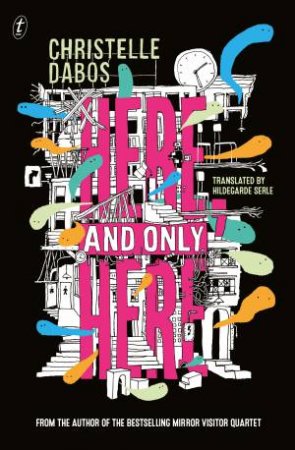Here and only here by Christine Dabos

As I read French author Christelle Dabos’ story of a harsh school environment dominated by the ‘prince’, the boy who makes all the rules and metes out punishments, I was reminded of a similarly harsh and cruel world, that of Heaven by Japanese author Mieko Kawakami. In both books the bullies dominate and the depiction of bullying is violent and sadistic. In Dabos’ school, ‘Here’, the learning is about how to survive in an environment that has its own rules, separate from parents and from anything the students have known before.
The narrative alternates between four students, Iris, Pierre, Madeleine and Guy. Iris knows from the first day, as her hand is discarded by her older sister as they enter the school gate, that she is on her own, and the only way to survive is to stay as invisible as possible. Pierre is a victim, ‘the odd number, the jack of spades, the lousy kid’ and he has to stay that way, even if it means entering the ‘bogs from hell’. Madeleine, caught in a continual competition with a former friend, tries to assert her own power. And Guy is another ‘odd one out’ learning to be a bully until he is challenged by a strange new foreign girl who doesn’t comply.
We also hear about a secret club that might bring about the end of the world. And there is a substitute teacher, a former student who has been through it all before, who knows that they are all ‘Lynchers. Liars. Abusers. Torturers, the lot of them, even the victims’.
In an interview with The Fantasy Hive, Dabos says she doesn’t remember a single lesson from her years at school. What she learnt was outside of the classroom, about herself, her body, and her relationships with others. It was a time of leaving behind childhood and working out what’s happening.
The setting of Here and only here is surreal, the bullying experiences magnified, the teachers ineffectual, but in the depictions of students’ personal struggles there are elements of truth that every reader will recognise. There are ultimately moments of hope in each story but most especially with the story of Guy there is an uplift in the overall mood, as he gradually meets the challenge that Sofie offers him and discovers his better qualities.
It’s a well-written, confronting and thought-provoking book, but like Kawakami’s Heaven I don’t think this book is for the age group it describes but for more mature YA readers.
Themes: School, Bullying, Victims, Identity.
Helen Eddy